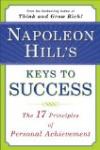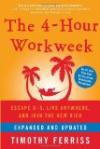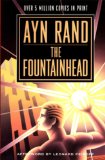Olivier Langlois's blog
Category: Windows programming
07/19/07
Microsoft Outlook Programming, Jumpstart for Administrators, Developers, and Power Users
It is not perfect. One complain is that the first part is too easy and is aimed for total beginners and then there is the second part where a lot of material is presented too fast. I wished that the book spent less time with very basic (pun intended) VBA stuff but takes more time to make the transition to more advanced topics smoother.
Other than that, the book contains a lot of code that can easily be reused such as in my C++ tutorial that shows how to automate Outlook from a C++ program.
06/18/07

Categories: Windows programming, Windows programming, TCP/IP, TCP/IP
Winsock 2.0
Windows sockets are not like BSD sockets. The book explains very well the different specific modes into which winsock can be used: Blocking mode in a dedicated thread, asynchronous mode using Windows messages and Overlapped I/O that removes some memory copying when passing buffer to send/receive data from/to sockets. It also covers the Socket classes provided with MFC. In my opinion, this book covers very well the details specific to Windows version of the socket API and that will allow the readers to take advantage of this socket API version.
06/17/07

Categories: Windows programming, Windows programming
Inside ATL
ATL is an interesting C++ framework to easily create COM classes. It uses extensively the C++ templates and is coupled with Visual C++ wizards to automate the writing of skeleton code of an ATL project. However there is not much documentation coming with VC++ on ATL and there are so much options in the wizards dialog windows that unless you know what you are doing, you will probably not do the right thing. This is where this book comes in.
First, one of the coauthor, George Shepherd, is also the coauthor of the book MFC Internals that I really liked. This book does a good job to guide you through the main ATL features. My only complain is that, like almost every other book on COM that I have read, it assumes that you know nothing about C++ and COM and takes the first 2 chapters to introduce you these topics and that represents almost 100 pages of prerequisite material that should have been found only in a introduction book IMO.
Effective COM: 50 ways to improve your COM and MTS based applications
This book borrow the format that made the Effective C++ popular. It presents 50 tips on COM. Its targeted audience is developers that have been using COM for a while. Prior knowledge of COM is expected for reading this book. In general, it provides very good tips but the only exception is the section about MTS. Maybe the tips are good but I do not know as I have never worked with MTS. That section contains 8 tips of the 50 tips of the book.
06/16/07

Categories: Windows programming, Windows programming
Understanding ActiveX and OLE
Usually, when I read a book on a programming technology, I expect to see some source code somewhere. This book is surprising in that regard because it only contains plain english from the first page to the last. There was a hint on the cover page by indicating that managers are included in the targeted audience. This feature has some merits but is also a pain at some other places.
When presenting software to programmers, the most straight to the point way to present the material, it is with source code and I feel that at some occasions, a function definition would have replaced pages of explanations. On the other hand, it is easy to get lost in pages of source code filled with error condition handling code where a simple paragraph of plain english would have been enough to communicate the general idea behind a software module.
With these remarks in mind, this is why, as a programmer, I did not like the first few chapters describing COM basics and really appreciated the last chapters covering OLE compound documents, ActiveX and the usage of COM by MS Internet Explorer.
:: Next Page >>
Olivier Langlois's blog
I want you to find in this blog informations about C++ programming that I had a hard time to find in the first place on the web.
| Next >
| Sun | Mon | Tue | Wed | Thu | Fri | Sat |
|---|---|---|---|---|---|---|
| << < | > >> | |||||
| 1 | 2 | 3 | 4 | 5 | 6 | |
| 7 | 8 | 9 | 10 | 11 | 12 | 13 |
| 14 | 15 | 16 | 17 | 18 | 19 | 20 |
| 21 | 22 | 23 | 24 | 25 | 26 | 27 |
| 28 | 29 | 30 | 31 | |||
Search

Categories
Olivier Langlois's blog
- AAC (2)
- Book reviews (12)
- C++ (24)
- Code Optimization (4)
- Compiler (3)
- Fractal (2)
- Linux/UNIX (3)
- Multithreading (3)
- Software security (7)
- TCP/IP (8)
- Web (1)
- Windows programming (19)
- C++ (28)
- tutorials (4)
- General (10)
- Hardware reviews (2)
- Linux (12)
- Recommended books (4)
- C++ (20)
- Code Optimization (2)
- Compiler (3)
- Fractal (2)
- Linux/UNIX (1)
- Multithreading (2)
- Rare out of print (3)
- Software security (5)
- TCP/IP (7)
- Windows programming (16)
- Software reviews (0)
- TCP/IP (8)
- Video games (4)
Archives
- January 2016 (1)
- September 2015 (1)
- July 2015 (1)
- June 2015 (1)
- May 2015 (1)
- December 2013 (3)
- September 2013 (1)
- May 2013 (8)
- April 2013 (1)
- December 2010 (1)
- August 2010 (1)
- June 2010 (1)
- More...
Misc
 XML Feeds
XML Feeds
What is RSS?
Who's Online?
- Guest Users: 2
 BOOKS i'm reading
BOOKS i'm reading







